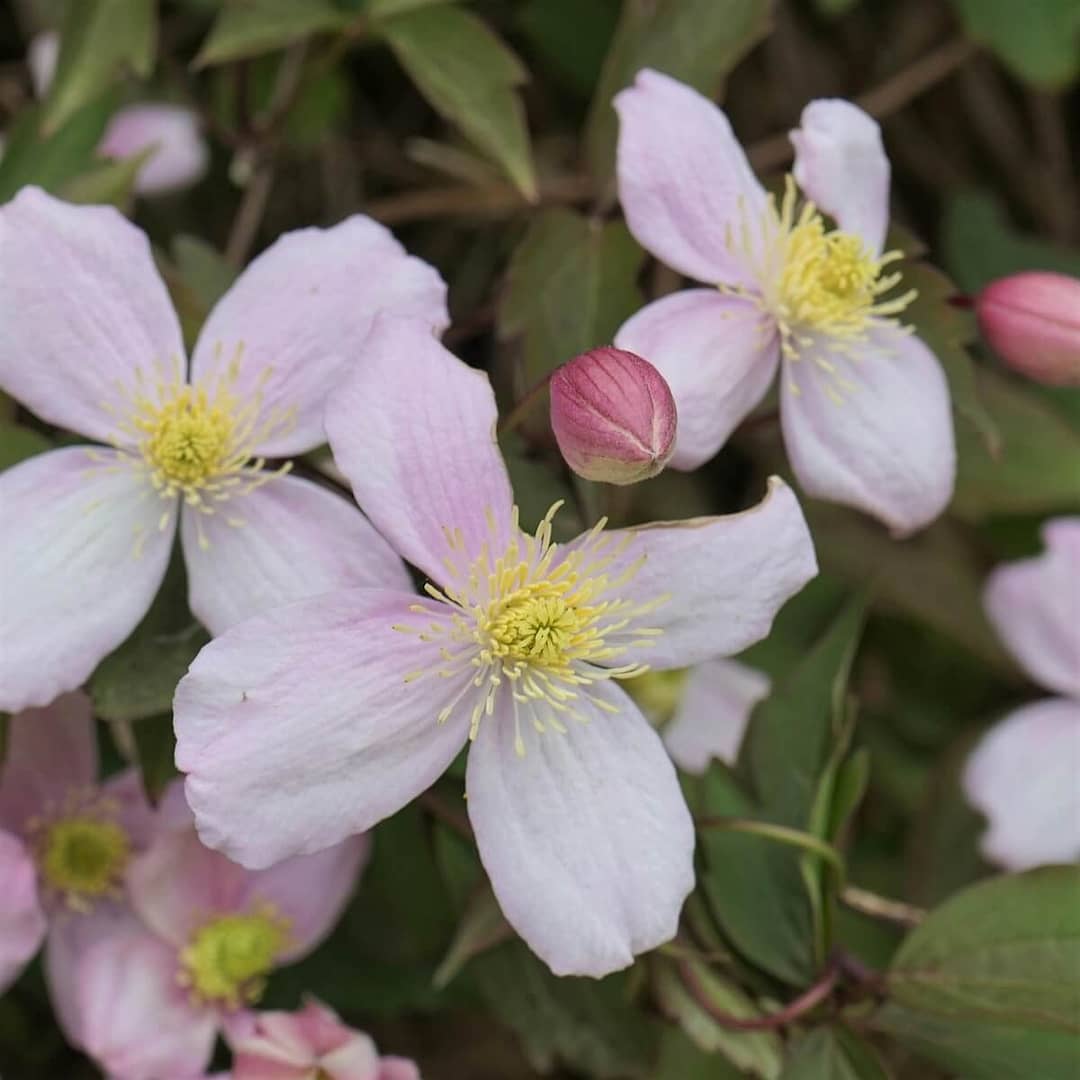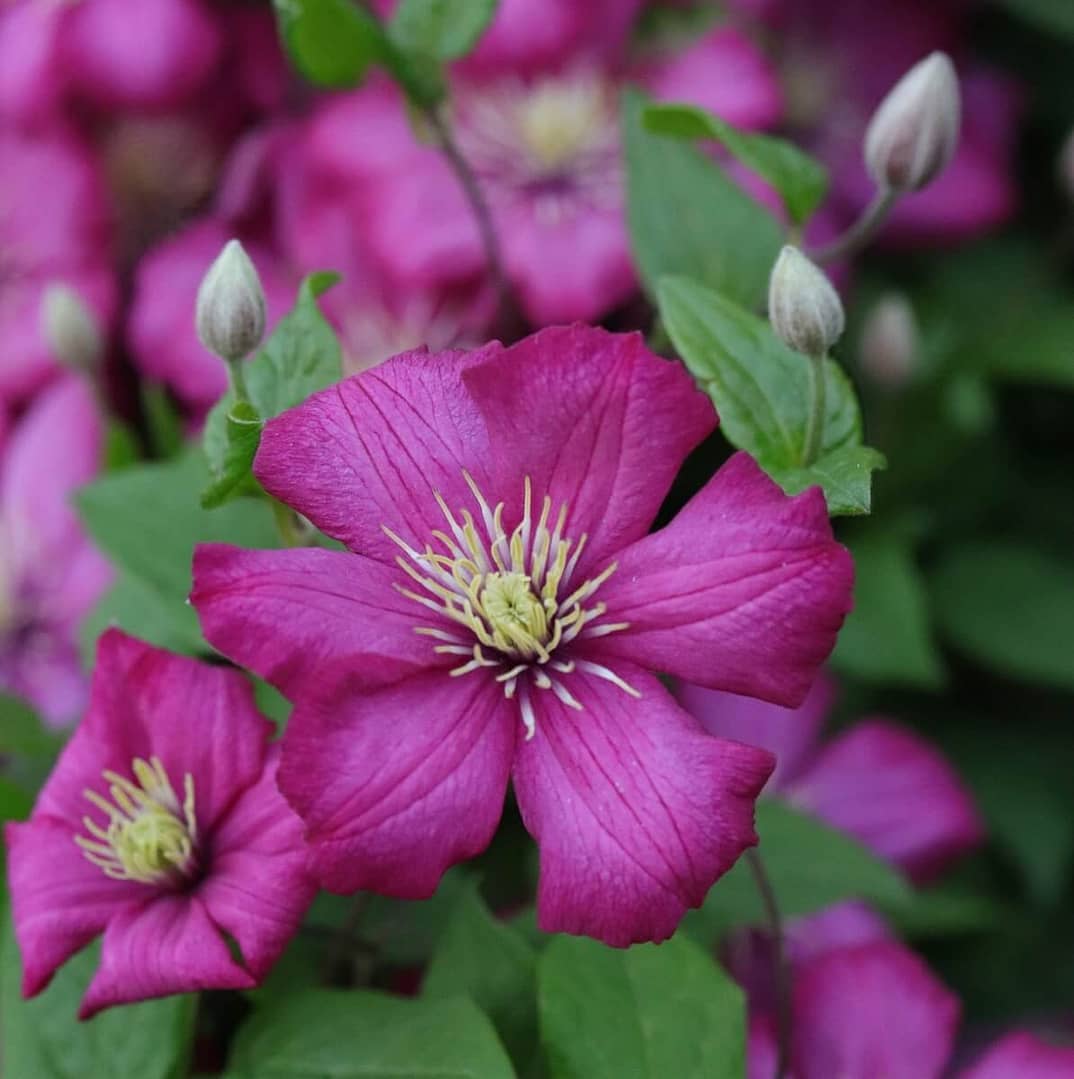Pruning Group 2 Clematis - A Complete Guide
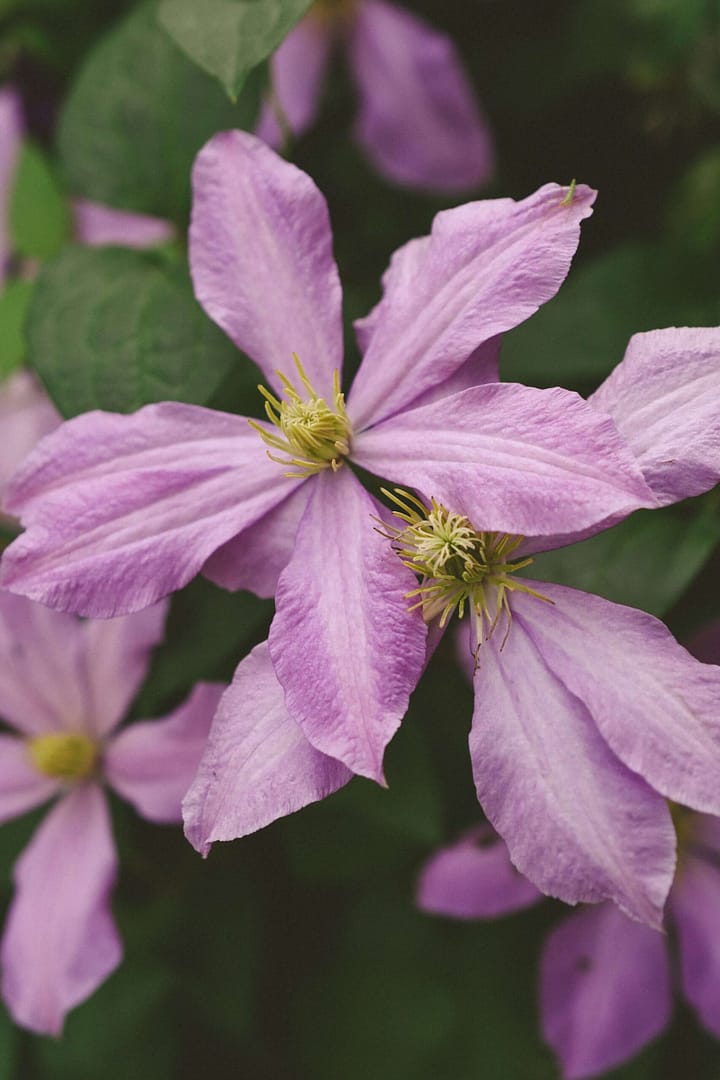
Understanding Group 2 Clematis
Group 2 clematis are known for their large, showy blooms and ability to flower twice a year—once in late spring and again in late summer. These mid-season bloomers are some of the most popular clematis varieties. However, to keep them looking their best, proper pruning is essential. In this guide, we’ll walk you through how to prune Group 2 clematis for maximum impact and list some popular varieties in this group.
Group 2 clematis bloom on both old and new wood, which makes their pruning needs a bit more nuanced than those of other clematis groups. The goal is to remove dead or weak growth while maintaining the plant’s framework, encouraging flowering at two different points in the growing season. Timing is key here—if you prune too hard or at the wrong time, you may sacrifice flowers. But don’t worry, it’s easier than it sounds once you get the hang of it!
When to Prune Group 2 Clematis
As new growth appears, pruning Group 2 clematis is typically done in late winter or early spring. Depending on your local climate, this normally occurs between February and March. Keep an eye on the plant—once the buds start swelling, it’s time to get the secateurs out.
The second pruning can be done after the first flush of blooms in late spring or early summer. This helps tidy the plant and encourages the second wave of blooms in late summer. You won’t need to prune as heavily at this stage; it’s just a light trim to remove spent flowers and tidy up the area.
How to Prune Group 2 Clematis
Here’s a step-by-step guide on how to prune your Group 2 clematis:
- Identify the framework: Group 2 clematis often develops a permanent framework of old wood. Identify the strongest stems that form this structure and avoid cutting these too heavily.
- Cut back weak or damaged growth: Use clean, sharp secateurs to remove any weak, spindly, or damaged growth. This encourages the plant to focus its energy on healthy shoots.
- Trim to strong buds: Locate the strong, healthy buds along the remaining stems. Cut back each stem to just above a pair of these buds, approximately 30-45 cm (12-18 inches) from the ground. This will encourage new growth, producing your first wave of blooms.
- Light summer pruning: After the first flush of flowers, you can lightly prune to remove spent flowers and untidy growth. Be careful not to cut too much off at this stage, as the plant prepares for its second bloom.
- Training your clematis: As the plant grows, gently guide the new shoots onto your support structure, whether a trellis, fence, or pergola. Spacing the stems out will allow air to circulate and sunlight to reach the leaves, promoting healthier growth and a greater number of flowers.
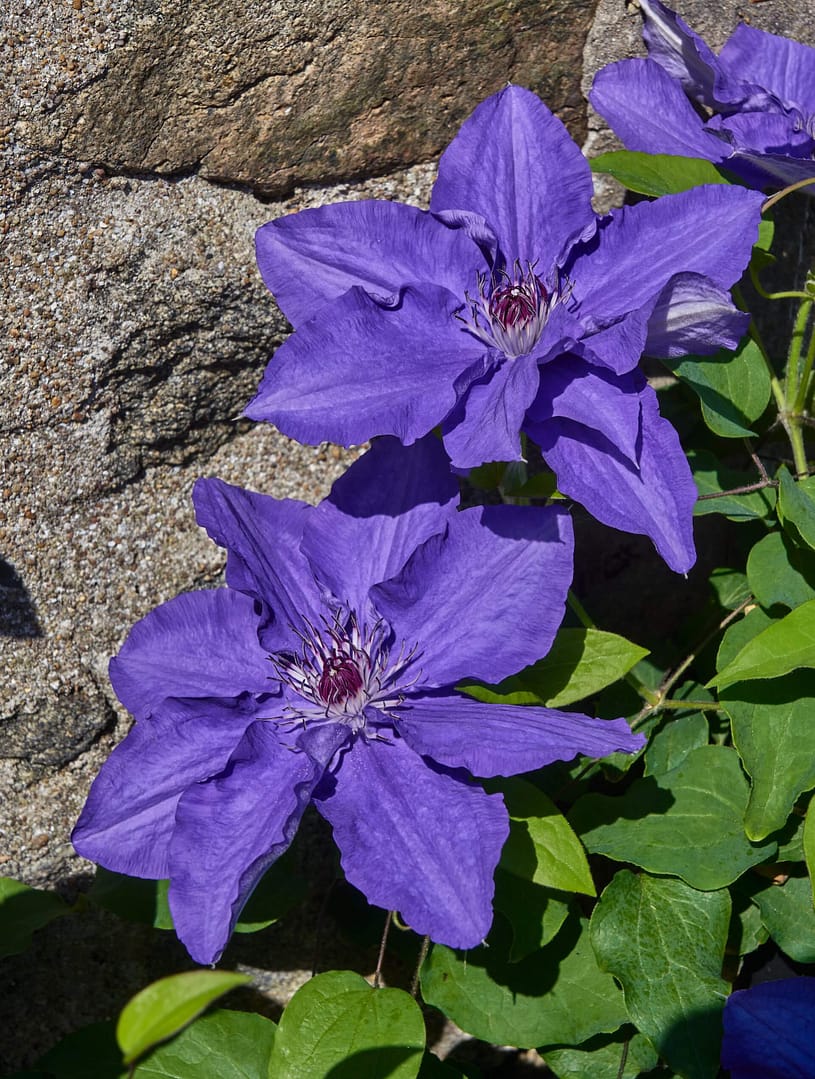
Benefits of Proper Pruning
Pruning isn’t just about keeping your clematis tidy—it has real benefits for the plant’s overall health. Proper pruning encourages stronger growth and more abundant flowering. Removing old or weak stems enables the plant to allocate more energy to healthy shoots, resulting in improved blooms. Additionally, pruning improves airflow and helps prevent fungal diseases, which can be problematic for clematis if they become too congested.
Regular pruning also allows you to monitor the plant’s general health and spot problems early. It helps prevent the plant from becoming too large for its space, which can lead to issues with shading out surrounding plants or even damage to nearby structures.
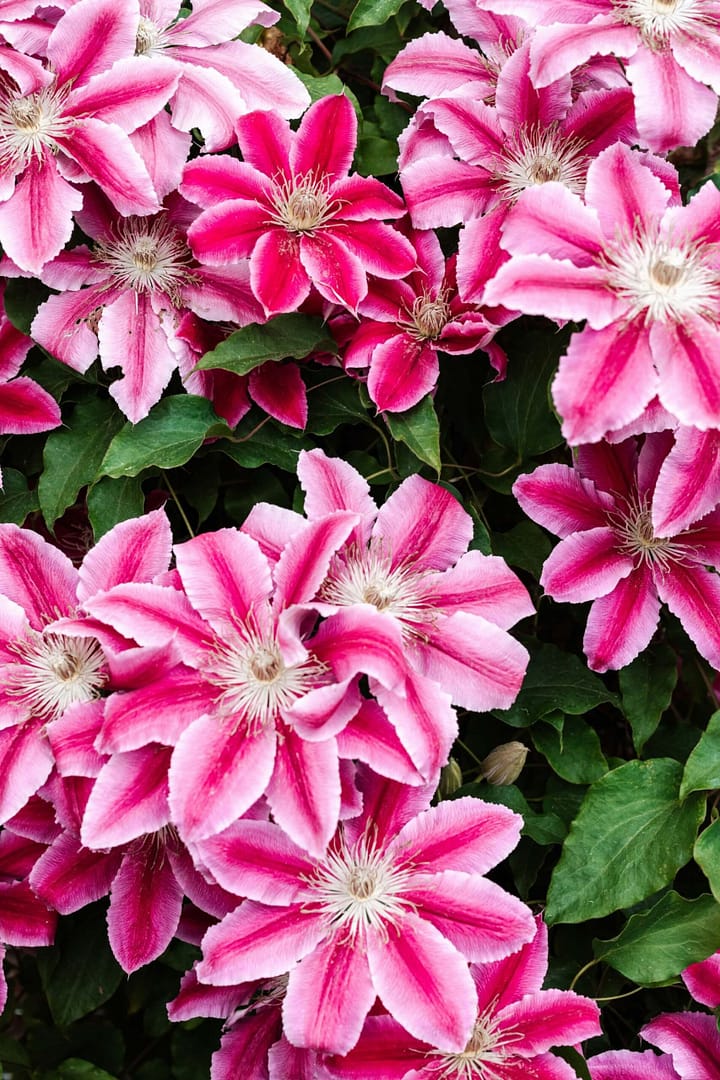
Popular Group 2 Clematis Varieties
There are many beautiful varieties of Group 2 clematis, each offering its stunning blooms and colours. Here are some of the most popular:
- Clematis ‘Nelly Moser’: One of the most recognisable varieties, ‘Nelly Moser’ has large, pale pink flowers with a striking darker pink stripe down each petal. It blooms in May and again in late summer.
- Clematis ‘The President’: This variety features deep purple, star-shaped flowers that bloom twice a year. It’s a robust plant that works well against a trellis or wall.
- Clematis ‘Duchess of Edinburgh’: This double-flowering variety produces beautiful, fully double white blooms. It’s perfect for adding a touch of elegance to the garden.
- Clematis ‘Crystal Fountain’: Known for its unusual ruffled blooms, ‘Crystal Fountain’ has lavender flowers with a spiky, fountain-like centre.
- Clematis ‘Josephine’: This variety is loved for its double, rose-like blooms that change colour as they mature. Flowers appear in late spring and early autumn, offering a spectacular show.
- Clematis ‘Vyvyan Pennell’: This double-flowering clematis opens with purple blooms in early summer and produces a second wave of single flowers later in the season.
- Clematis ‘Dr Ruppel’: With its large, rose-pink flowers featuring a dark pink stripe, ‘Dr Ruppel’ is a favourite among gardeners. It’s vigorous, hardy, and performs well in various garden settings.
- Clematis ‘Bee’s Jubilee’: A stunning variety with soft pink flowers and a rich pink central bar. It flowers early in the season and again towards the end of summer.
- Clematis ‘Guernsey Cream’: As the name suggests, this variety produces creamy white blooms with a pale green centre. It’s great for brightening up darker spots in the garden.
- Clematis ‘Marie Boisselot’: This classic white clematis is a reliable performer, producing large, pure white blooms twice a year.
Common Mistakes to Avoid
While pruning Group 2 clematis is pretty straightforward, there are a few common mistakes to watch out for:
- Pruning too hard: Unlike Group 3 clematis, Group 2 plants don’t benefit from a hard prune. Cutting them too low can remove flower buds, resulting in fewer blooms.
- Pruning at the wrong time: Timing is crucial. If you prune too late in the season, you risk losing the first flush of blooms. Similarly, avoid heavy pruning after the second flowering period.
- Ignoring weak or damaged growth: Failing to remove damaged stems can lead to poor air circulation and reduced flowering. Always take the time to clear out weak growth.
- Not supporting the plant: Clematis need support to grow properly. Ensure they have a good trellis or other structure to climb on, and train the stems to prevent them from becoming tangled or damaged.
Final Tips for Success
Pruning Group 2 clematis doesn’t have to be intimidating. Once you’ve mastered the technique, you’ll be rewarded with beautiful, healthy plants that bloom twice a year. Keep an eye on your plant throughout the growing season, and don’t hesitate to tidy it up with light pruning when needed. Remember, every plant is different, so observe how your clematis responds and adjust your pruning approach as necessary.
By following these tips and caring for your clematis, you’ll enjoy stunning flowers year after year.
Check out the RHS page on pruning group 2 Clematis here.
For more information on Clematis, please click here.
Pruning Clematis
Pruning clematis properly is key to healthy growth and plentiful blooms. Our guide shows you how to prune each clematis group so your plants flourish. Whether you’re a beginner or want expert tips, click the link to learn the best timing and techniques. Do it well, and enjoy beautiful, vibrant displays year after year! Click Here
Pruning Group 1 Clematis: A Complete Guide
Pruning Group 1 clematis promotes healthy growth and plenty of blooms. These early-flowering types need light pruning just after they finish flowering. Using the correct methods helps keep their shape and encourages vigorous growth. This guide will walk you through the key steps for pruning Group 1 clematis. Click the link to find out more and get the best results! Read More
Pruning Group 3 Clematis: A Complete Guide
Pruning Group 3 clematis encourages strong, late-season blooms. These varieties require a hard prune annually to thrive. Our guide shows you how to prune for healthy growth and vibrant flowers. Click the link to discover the ideal pruning methods and timing for your Group 3 clematis. It’s simple to follow and keeps your plants looking their best! Read More


